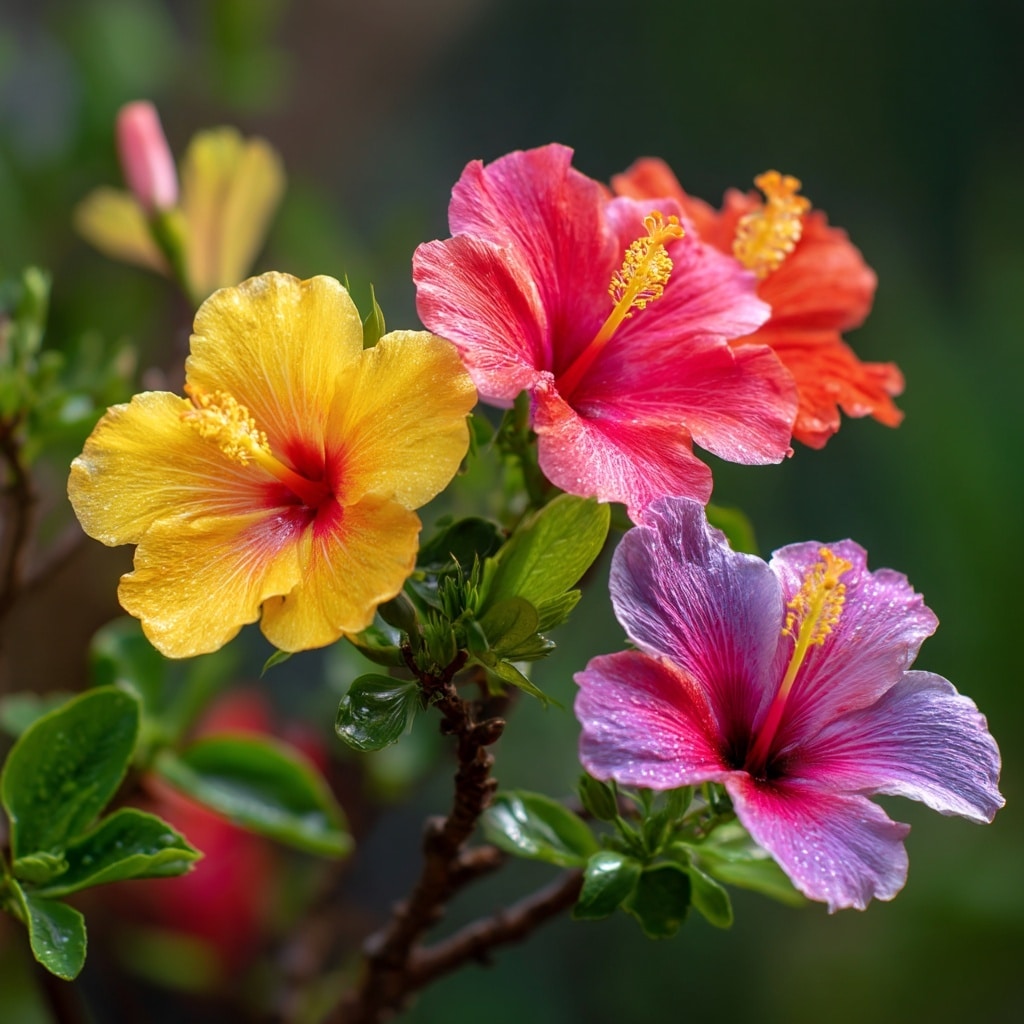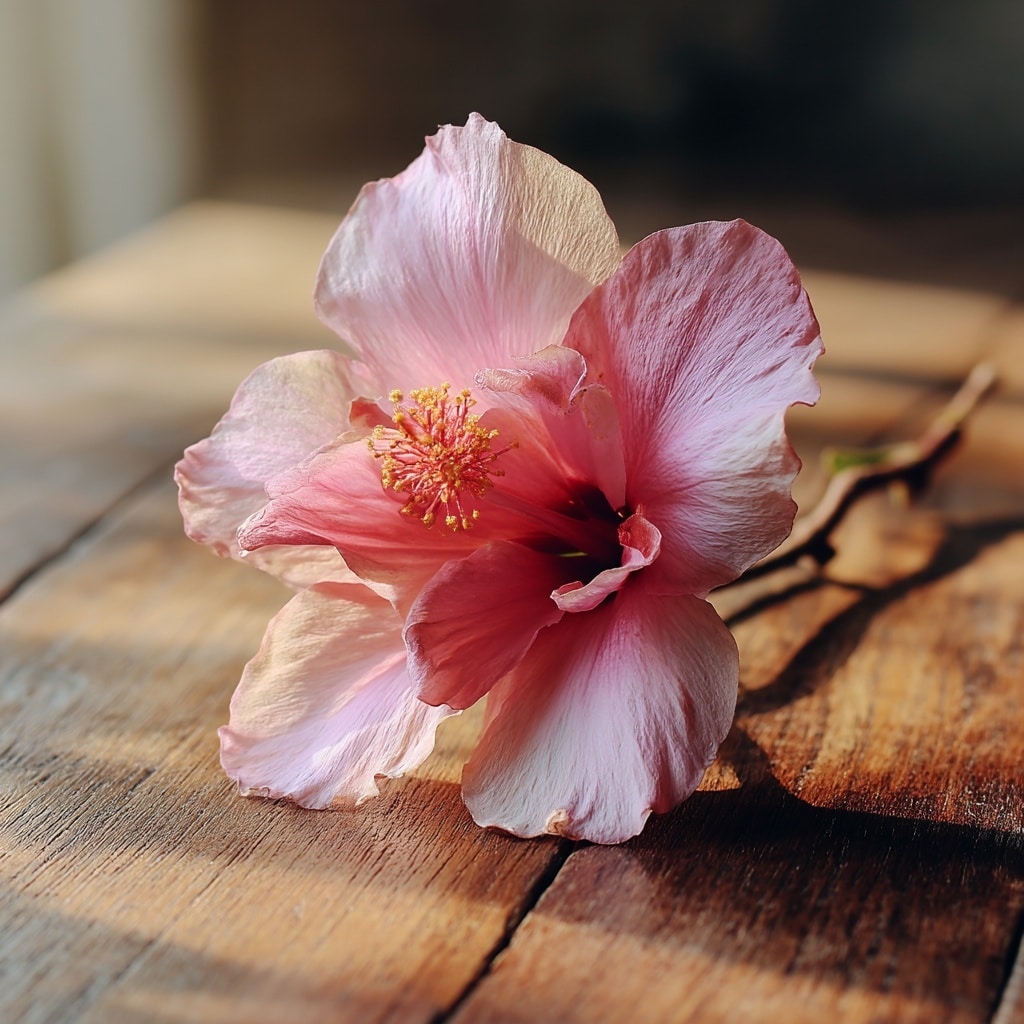The hibiscus flower is more than just a showy tropical bloom—it’s a plant steeped in meaning, tradition, and cultural symbolism across the globe. Known for its vibrant petals and lush appearance, this delicate flower holds powerful associations, from feminine beauty and romantic passion to fleeting glory and good fortune. Whether you’re drawn to its vivid colors or the stories it tells, the hibiscus flower has earned its place in gardens, ceremonies, and hearts for centuries. In this guide, we’ll uncover what different hibiscus colors mean, how the flower is used, and what makes it so unique.
Table of Contents
Hibiscus Flower Meaning in Different Cultures
Throughout history, the hibiscus flower has carried diverse meanings depending on where and how it’s been celebrated. In many cultures, it’s deeply tied to femininity, beauty, and the fleeting nature of life.
Symbol of the Perfect Woman
In places like Hawaii and other Pacific islands, the hibiscus is traditionally associated with women and often worn behind the ear. A hibiscus tucked behind the left ear can signal a woman is in a relationship, while behind the right means she’s available. The flower itself is seen as a symbol of a graceful, ideal partner—radiant and gentle.
Delicate Beauty in the Victorian Era
During the Victorian period, flowers were used to express feelings that couldn’t be spoken aloud. Giving someone a hibiscus bloom was a subtle yet romantic way to tell them they possessed rare and delicate beauty—something precious and admired.
Fleeting Glory in Chinese Symbolism
In Chinese culture, the hibiscus flower can represent short-lived fame or transient beauty. Because many hibiscus blooms only last a day, they’ve come to symbolize the idea that personal glory or beauty, while brilliant, may also be brief. This symbolism applies to both men and women and reminds us to appreciate the present moment.
Hibiscus Flower Meaning in Different Cultures
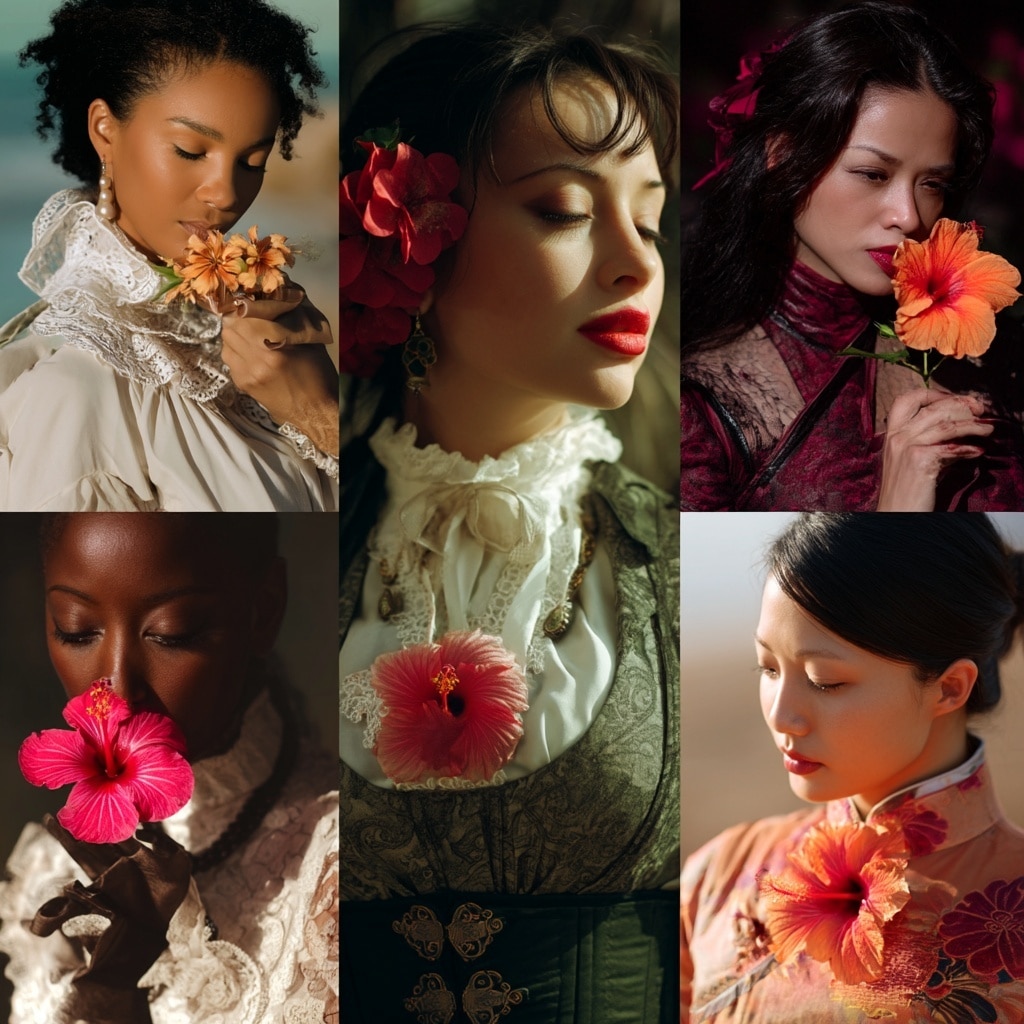
The hibiscus flower comes in a vibrant spectrum of colors, and each shade carries its own special message. From love and joy to mystery and wisdom, the color of a hibiscus can say a lot without a single word.
🌼 Yellow Hibiscus
Bright and cheerful, yellow hibiscus flowers are symbols of happiness, sunshine, and positive energy. In some cultures, they’re thought to bring good luck and are given to lift someone’s spirits or celebrate a joyful milestone.
❤️ Red Hibiscus
Red is the color of passion, and red hibiscus flowers represent deep romantic love, desire, and affection. They’re a bold and heartfelt way to express emotions, especially in romantic relationships.
💗 Pink Hibiscus
Soft and versatile, pink hibiscus blooms are associated with friendship, gentle love, and admiration. They can be given to friends, family, or partners to express warm, non-romantic affection and gratitude.
💜 Purple Hibiscus
Purple hibiscus flowers evoke a sense of mystery, intelligence, and elegance. Traditionally linked to royalty and spiritual insight, this color is often chosen by those who value depth, introspection, or wisdom.
What Does the Hibiscus Flower Smell Like?
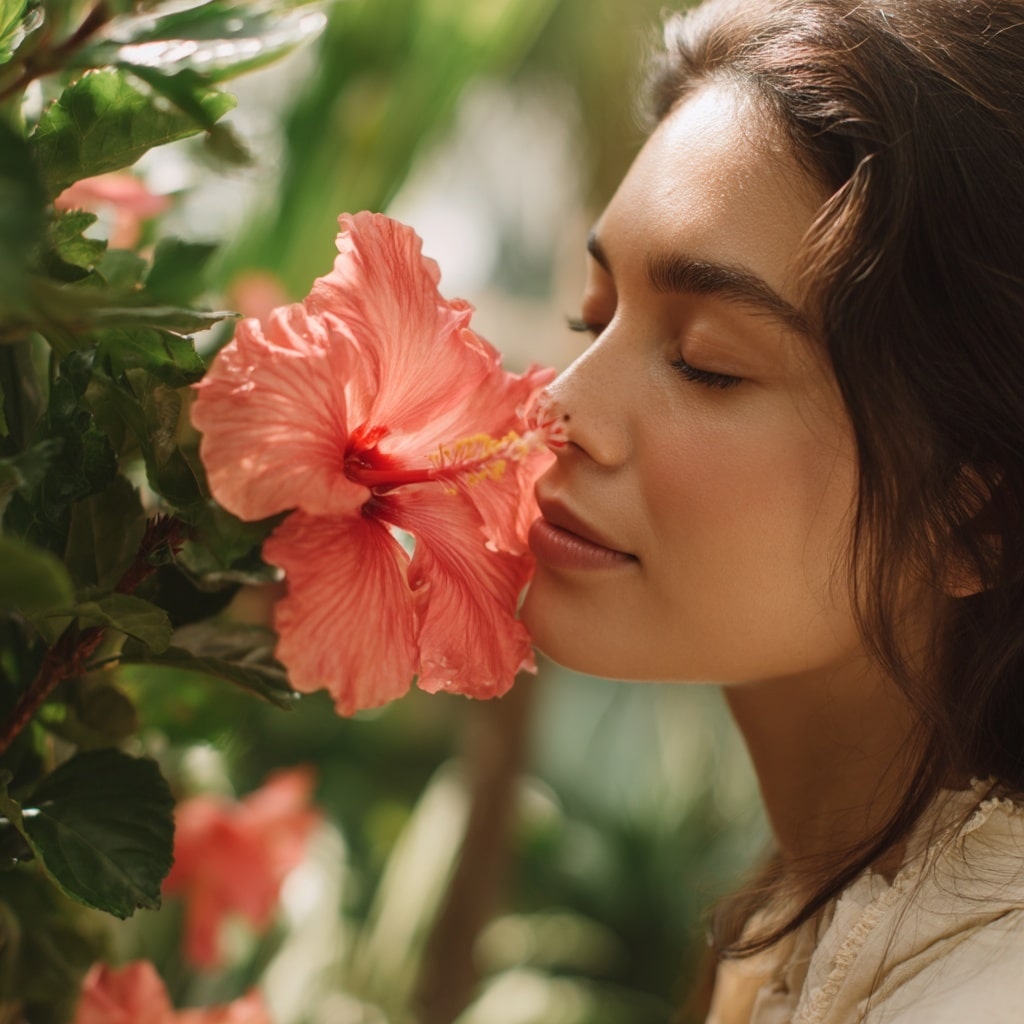
Unlike many popular blooms, the hibiscus flower isn’t known for a strong fragrance. In fact, most varieties are unscented. However, a few rare types may have a light, pleasant scent that’s often described as slightly sweet or floral—but very subtle.
This makes hibiscus more of a visual standout than an aromatic one. Its appeal lies in its bold appearance and vibrant petals, rather than perfume-like qualities. If you’re seeking a flower for scent, hibiscus might not top the list, but it certainly steals the show with its beauty.
The History of the Hibiscus Flower
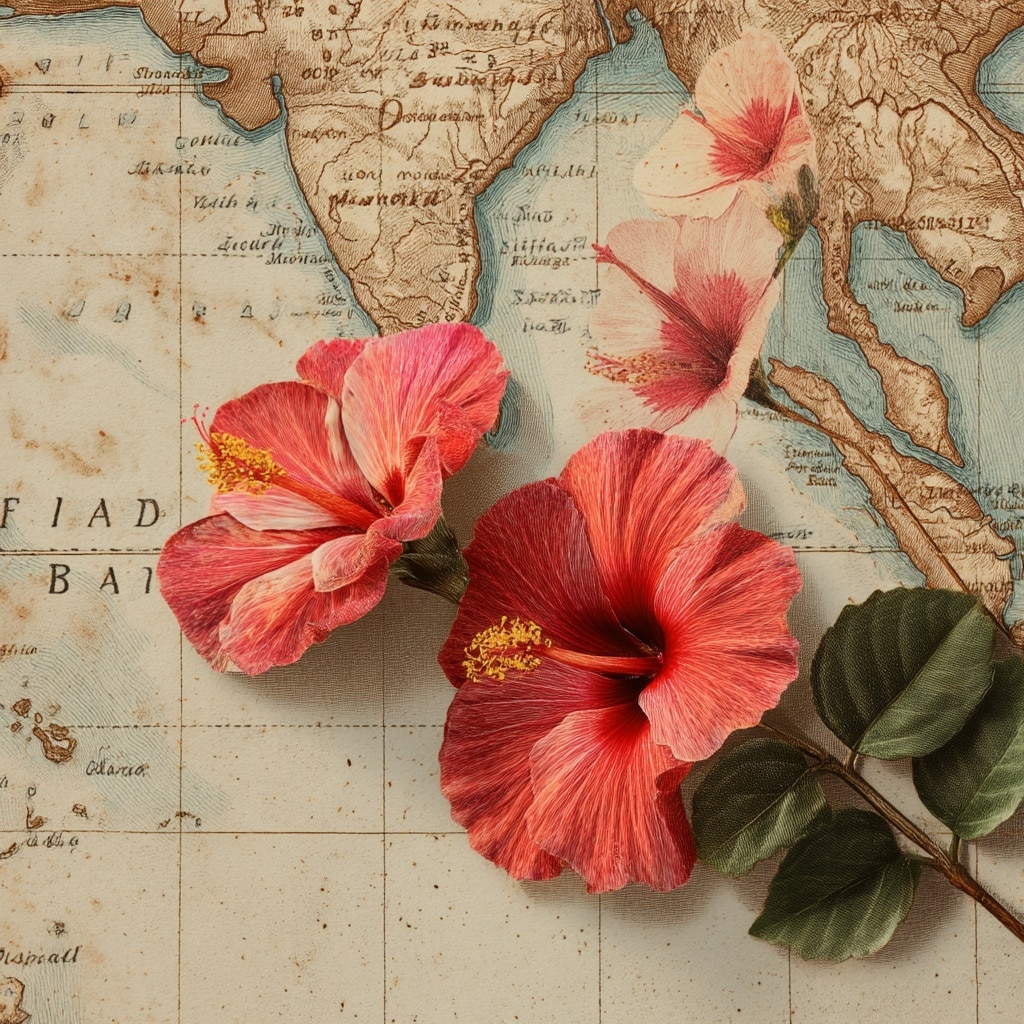
The hibiscus flower has a rich and far-reaching history that spans continents, cultures, and centuries. Native to tropical and subtropical regions, hibiscus varieties have long thrived in places like Mauritius, Madagascar, India, China, Hawaii, and throughout the Pacific Islands.
🌍 A Global Bloom
Ancient hibiscus species likely originated near the equator and spread naturally or through human migration. One theory suggests early Polynesian voyagers carried hibiscus seeds as they traveled across the Pacific, planting them on different islands along the way. These plants adapted to their new environments, evolving into distinct species.
🌋 Hibiscus in Hawaii
Hawaii played a major role in modern hibiscus development. By the early 1900s, gardeners on the islands were creating hybrids that produced bigger blooms and more vibrant colors. These efforts helped popularize the hibiscus flower as a beloved ornamental plant across the globe.
🧬 Botanical Evolution
Some experts believe all hibiscus species may have descended from a single ancestor, separated over time by shifting continents and natural evolution. Even today, researchers observe how hibiscus plants continue to evolve, especially in isolated island environments.
How to Grow Hibiscus
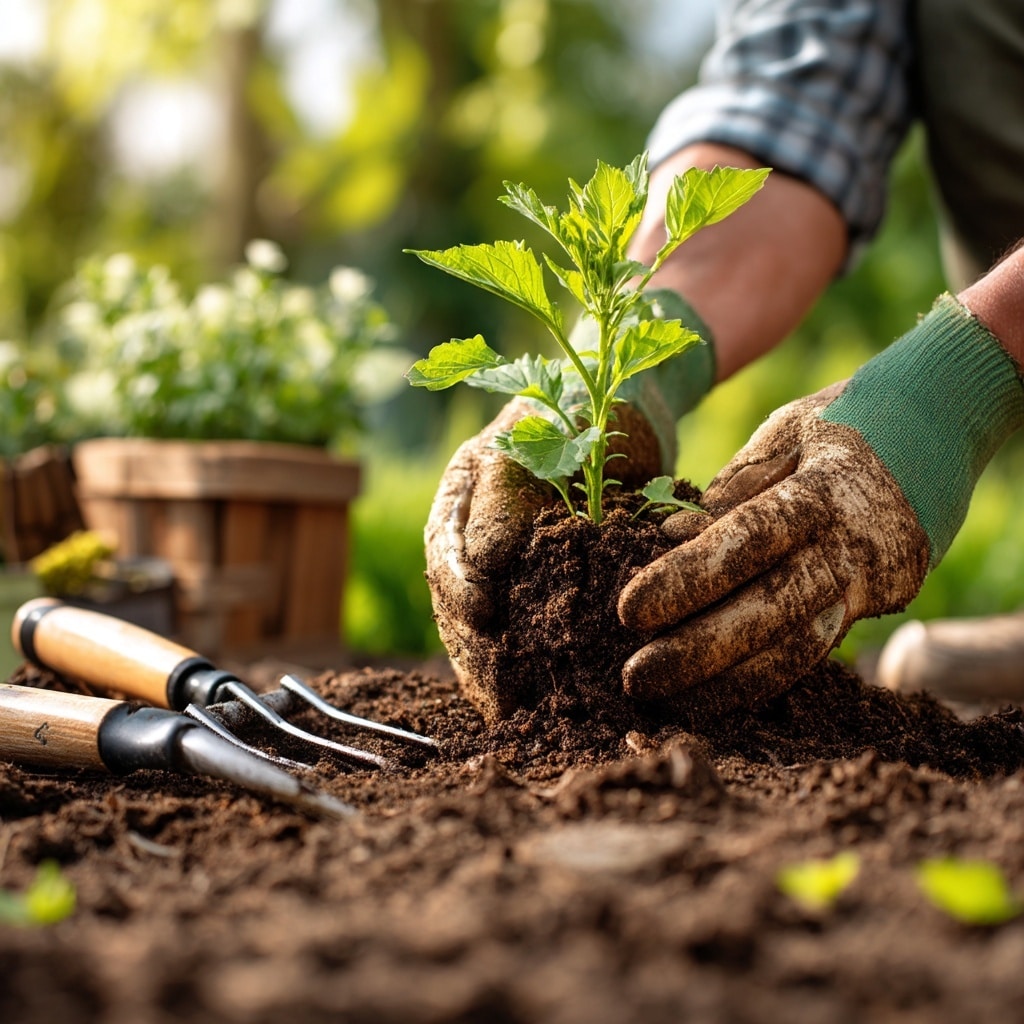
With the right conditions and a little care, the hibiscus flower can flourish in home gardens and containers alike. Whether you’re growing tropical or hardy varieties, success starts with sun, soil, and timing.
☀️ Sunlight and Soil Requirements
Hibiscus loves full sunlight. Aim for at least six hours of direct sun per day. The soil should be rich, moist, and well-draining—avoid letting roots sit in water, as this can lead to rot.
🌱 When and Where to Plant
Plant your hibiscus in the spring once temperatures consistently stay above 50°F (10°C), especially at night. Early planting gives the roots time to establish before extreme summer heat or winter cold sets in.
🛠️ Planting Tips
- Dig a hole twice as wide as the root ball and just as deep
- Gently remove the plant from its container and place it in the hole
- Fill in with soil, press gently, and water thoroughly
- Water every 2–3 days for the first few weeks, then reduce to once or twice weekly
📦 Container Growing
If you live in a cooler climate, consider growing hibiscus in pots. This allows you to bring the plants indoors during colder months. Choose a large container with drainage holes and use high-quality potting mix.
How to Care for Hibiscus
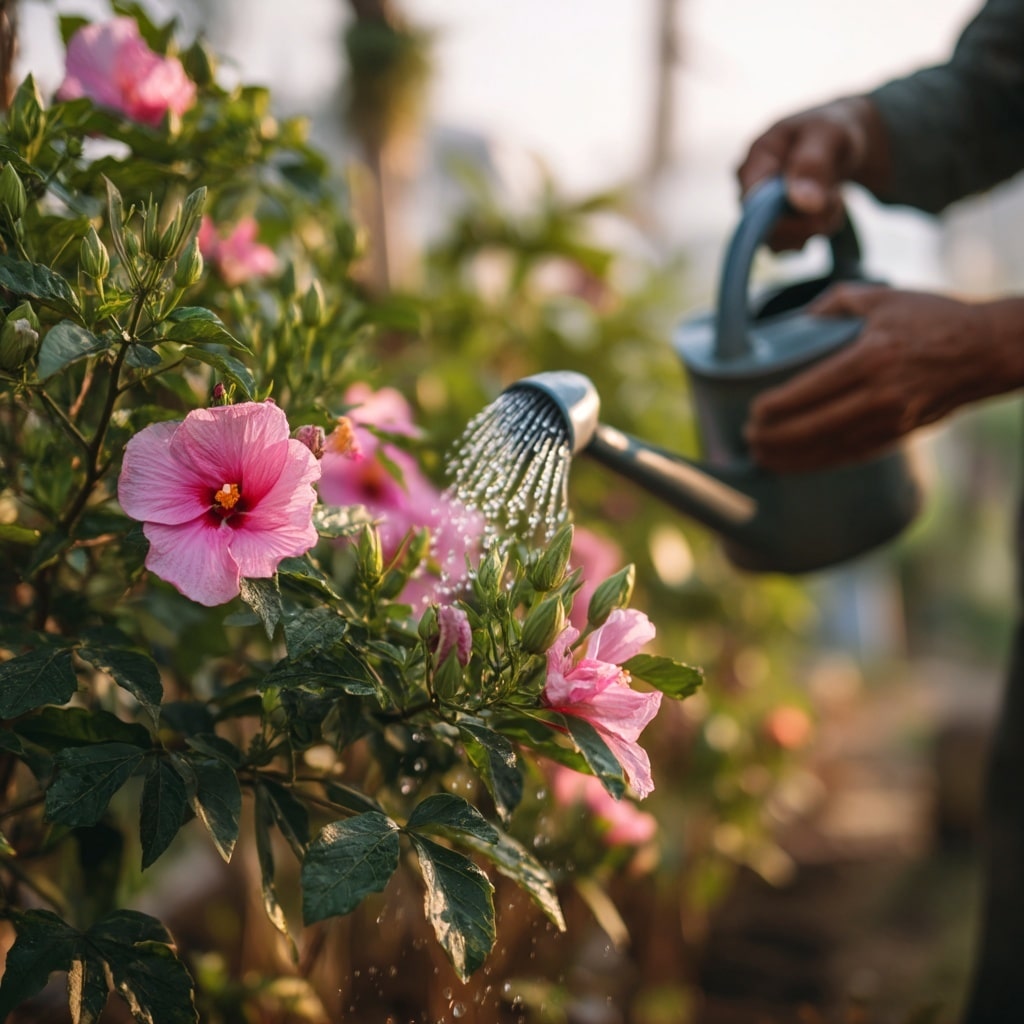
Once your hibiscus flower is planted, consistent care is key to keeping it vibrant and healthy. While hibiscus isn’t overly demanding, it does have specific needs when it comes to watering, feeding, and general upkeep.
💧 Watering
Hibiscus prefers consistently moist soil, especially during the growing season.
- Newly planted: Water deeply every 2–3 days
- Established plants: Water 1–2 times per week, depending on weather
- Avoid letting the soil dry out completely, but don’t overwater either
🌿 Fertilizing
Feed your hibiscus every 2–4 weeks during spring and summer using a balanced, water-soluble fertilizer. Look for one high in potassium for better blooms. Reduce feeding during fall and stop entirely in winter.
✂️ Pruning and Maintenance
- Trim back leggy growth in early spring to encourage fuller plants
- Remove dead or yellowing leaves regularly
- Pinch off faded flowers to promote continuous blooming
🧊 Cold Weather Care
Tropical hibiscus is sensitive to cold. If temperatures drop below 50°F (10°C), bring potted plants indoors or cover outdoor varieties. Hardy hibiscus can tolerate colder zones but still benefit from mulch in winter.
When to Give a Hibiscus Flower as a Gift
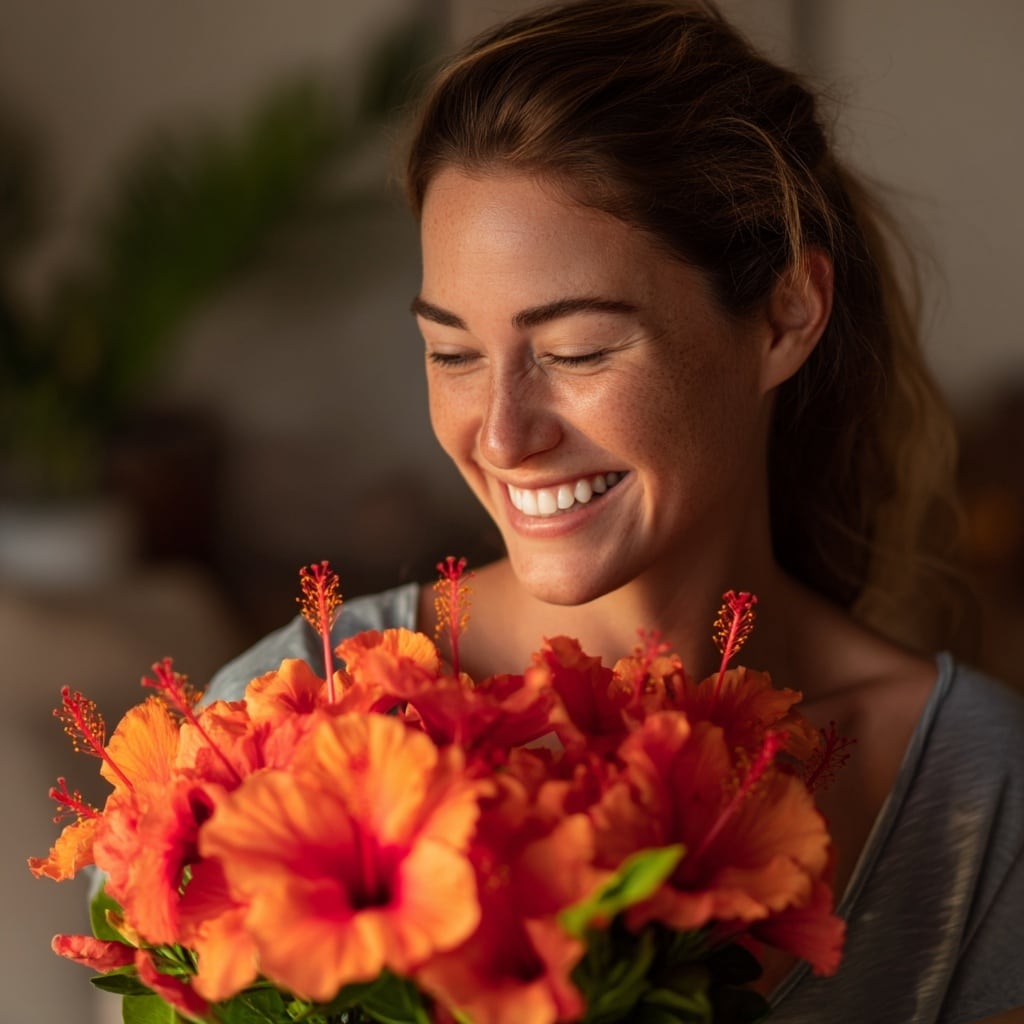
The hibiscus flower isn’t just beautiful—it’s deeply symbolic, making it a meaningful gift for many occasions. Whether you’re expressing affection or celebrating a joyful moment, hibiscus offers a thoughtful way to say more than words can.
💖 Romantic Gestures
Known for symbolizing passion and delicate beauty, the hibiscus flower is a wonderful gift for a partner or someone you admire. Red or pink hibiscus blooms are perfect for anniversaries, date nights, or heartfelt surprises.
🌴 Summer Celebrations
Hibiscus flowers evoke warmth and sunshine, making them a popular choice for tropical-themed parties, beach weddings, or summer birthdays. Their bold colors add life to any gathering.
🧑🤝🧑 Close Friendships
Not all hibiscus gifts have to be romantic. Yellow and pink varieties make charming gestures of appreciation for close friends or family, offering cheerful vibes and well-wishes.
🌺 When You Want to Stand Out
Giving a hibiscus flower instead of more common flowers like roses or tulips shows creativity and intention. It’s perfect when you want your gesture to feel unique and personal.
Conclusion
The hibiscus flower is more than just a tropical beauty—it carries layers of meaning, history, and symbolism that make it truly special. From romantic gestures to cultural traditions, each bloom tells a story shaped by its color, origin, and the care it receives. Whether you’re planting it in your garden, offering it as a gift, or simply admiring its vivid petals, the hibiscus flower is a timeless reminder of delicate beauty and living in the moment.

